Reliant - Account management & energy tracking
Experience effortless electricity management with alerts, usage tracking & smart thermostat integration for your home.
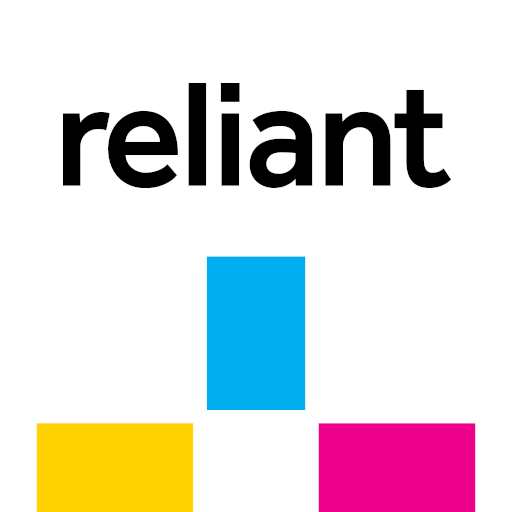
- 9.4.0 Version
- 3.2 Score
- 296K+ Downloads
- Free License
- 3+ Content Rating
The enhanced Reliant application provides users with robust new functionalities, along with a multitude of straightforward methods to oversee their Reliant account. You can monitor your electricity consumption, receive notifications, pay your bills, and connect your Google Nest thermostat and Goal Zero Yeti.
Ensure your home remains comfortable
Link up and adjust your Nest thermostat from anywhere remotely.
Keep track of electricity, solar, and electric vehicle consumption.
Examine your electricity usage details on a daily, weekly, monthly, or yearly basis. View your anticipated electricity bill and compare current usage with previous periods.
Observe your solar energy production and consumption, along with your Energy Efficiency score.
Connect your electric vehicle to time your charging, assess gas savings, and evaluate your environmental impact.
Stay informed
Enroll in Reliant Account Alerts to monitor your electricity usage, billing deadlines, and expected charges.*
Pay your bill in your preferred manner
Quickly and securely pay your bills using a saved credit card or bank account.
Oversee prepaid funds
For those on a Reliant prepaid electricity plan, utilize the in-app payment calculator to manage your electricity spending.
Access essential account information
Check your plan specifications and adjust account settings. Qualified customers also have the option to renew, switch, or alter their plans.
Receive help anytime
Reach out to customer support, report any outages, find payment locations, and access frequently asked questions.
*This feature is not available for customers who are part of a Reliant prepaid electricity plan.
The Reliant app is currently exclusive to residential customers.
Reliant is not connected to Google or the products and services they advertise. Google Nest and Google Nest thermostat are trademarks of Google LLC.
Reliant is a registered service mark of Reliant Energy Retail Holdings, LLC. Reliant Energy Retail Services, LLC (PUCT Certificate #10007). © 2023 Reliant Energy Retail Holdings, LLC. All rights reserved.
Google Play and Android are trademarks of Google Inc.
Solar panel farms in Texas: exploring an important renewable energy resource
Making the most of the sun's power
Solar panels are being seen more and more on residential rooftops. Large-scale installations of solar panels – often referred to as solar farms – are becoming more familiar too, especially when traveling through landscapes that receive extra sun.
With an increase in solar installations, whether residential or on a larger scale, solar power is becoming a more prominent feature of the modern energy supply. At Reliant, we're here to help you learn more about solar farms and their benefits for communities in Texas and beyond.
What is a solar farm?
A solar farm is a large series or array of solar panels arranged in one location. It is designed to maximize solar energy generation very efficiently. Panels are typically spread over acres of land, strategically located where they’ll receive the best sunlight exposure.
Solar-panel arrays, whether small or industrial-scale, can be grouped into different categories according to their size.
Rooftop solar panels typically generate solar energy for a single home or smaller-scale structures.
Solar gardens have more panels. They can serve groups of homes or businesses in an urban or suburban setting.
Community solar farms are larger in scale. They may not reaily fit in an urban setting, but they can provide electricity for a larger group of homes and businesses.
Very large solar arrays can generate power on the utility- or industrial-grade level
How energy is generated at solar farms
In both residential and larger-scale applications, solar panels, or photovoltaic (PV) systems, are the heart of solar energy generation. These panels convert sunlight into electricity that can power your home. Here's a simple breakdown of how it works:
Each solar panel is equipped with photovoltaic (PV) cells. These cells absorb sunlight, creating an environment where energy can be harnessed.
When the PV cells absorb sunlight, they generate direct current (DC) electricity. This is the initial step in transforming radiant energy into a form you use in your home.
Before this electricity can power your home, it must be converted from DC to alternating current (AC) electricity. This is where an inverter comes into play, ensuring that the electricity is in the right form to meet your needs.
Once converted, this electricity is ready to use. It can power everything from your lights to your refrigerator.
Texas is home to multiple large-scale solar farms
As of 2023, according to the Public Utility Commission of Texas, 9,469 solar-powered, electric-generating projects were completed in Texas.
In Texas and beyond, solar farms are renewable-energy workhorses. They exemplify how energy technology can lead to environmental preservation.
A closer look at the types of solar farms
Community solar farms: powering neighborhoods together
Imagine a large, open field with rows of gleaming solar panels. This is a community solar farm, a shared resource that allows multiple households and businesses to benefit from a single, large-scale solar installation. Participating in a solar farm means you don't need to have solar panels on your roof to enjoy the benefits. Instead, you can subscribe to a portion of the energy produced and receive credits on your electricity bill. It's a way for renters or those without suitable rooftops to still participate in and benefit from solar energy. Community solar farms are designed to make going solar more accessible to everyone.
Solar gardens: powering a small community
Solar gardens are much like community solar farms. They’re simply a smaller version, suitable for placement in urban or suburban areas. Members of a community can buy or lease a part of a solar garden and, like community solar farms, receive credits on their electricity bills for their share of the power produced. Solar gardens have solar energy generation for a primary purpose, but they can also foster a sense of connection among participants.
Utility-scale solar power
Utility-scale solar power refers to large-scale solar installations designed to generate electricity on a massive scale. Unlike the solar projects described above, these installations are often spread across vast areas of land, harnessing the sun's power to produce energy sufficient to supply thousands of homes and businesses. These projects can range from tens to hundreds of megawatts in capacity. Generating and adding that amount of energy to the grid can make a significant impact on energy security and diversity of sources.
Innovations helping to advance solar farms
The solar energy sector is always advancing, promising to make solar power more efficient and accessible, as well as playing an important role in scaling up output. These are some of the innovations that are ushering in the next wave of solar generation.
Perovskite solar cells
Perovskites are a class of materials that have shown great potential in creating highly efficient and cost-effective solar cells. Unlike traditional silicon-based solar cells, perovskite solar cells can be produced at lower temperatures and can be applied to flexible surfaces, opening up new possibilities for integration into windows, vehicles and even wearable technology. Their efficiency in converting sunlight into electricity has rapidly increased.
Floating solar farms
Floating solar farms, or "floatovoltaics," show potential to overcome land use challenges associated with traditional solar farms. By installing solar panels on structures floating on lakes, reservoirs and other bodies of water, this technology maximizes unused space and reduces water evaporation. The cooling effect of the water can also improve panel efficiency. Floating solar farms look like a good solution for regions where land is scarce but there is an abundance of water bodies.
Solar skins
Solar skins are a technology that uses selective light filtration to display custom designs on the surface of solar panels, making them blend seamlessly with roofing materials or showcasing artistic designs. Solar skins open up new avenues for aesthetic beauty in solar panels that appear on buildings and homes, addressing a common concern about the visual look of traditional panels.
Bifacial solar panels
Bifacial solar panels are designed to capture sunlight from both sides, significantly increasing their energy generation capacity compared to traditional single-faced panels. Bifacial panels can catch sunlight that is reflected off the ground or surrounding surfaces, potentially producing more electricity in the same footprint. This technology is particularly beneficial in snowy environments.
Solar energy storage innovations
Advancements in energy storage are critical to overcoming the intermittent nature of solar power. Recent innovations in battery technology offer higher energy density, longer lifespans and improved safety compared to traditional lithium-ion batteries.
- Version9.4.0
- UpdateJul 31, 2025
- DeveloperReliant Energy Retail Holdings, LLC.
- CategoryBusiness
- Requires AndroidAndroid 9+
- Downloads296K+
- Package Namecom.reliant.app
- Signaturef62d9f709a157ad691a972c7a1583e04
- Available on
- ReportFlag as inappropriate
-
NameSizeDownload
-
110.01 MB
-
99.64 MB
-
99.64 MB




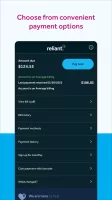
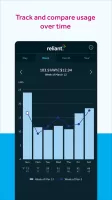
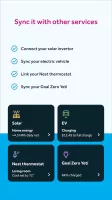
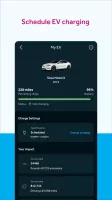
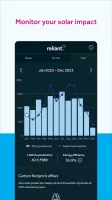


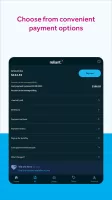

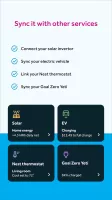
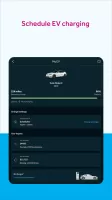
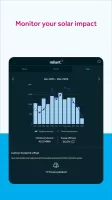



















User-friendly interface for easy navigation
Convenient bill payment feature
Weekly energy usage tracking
Access to customer support via chat
Ability to monitor and adjust electricity usage
Integration with Google Calendar for reminders
Offers rewards program for savings
Constant updates and improvements
Frequent crashes and loading issues
Bugs after updates, affecting functionality
Difficulty in adding or changing payment methods
Lack of responsive customer service
Errors in billing and payment processing
Inaccessible features for certain users (e.g., screen reader users)
Complicated or unclear terms regarding payments and services
Confusion over discrepancies in billing statements